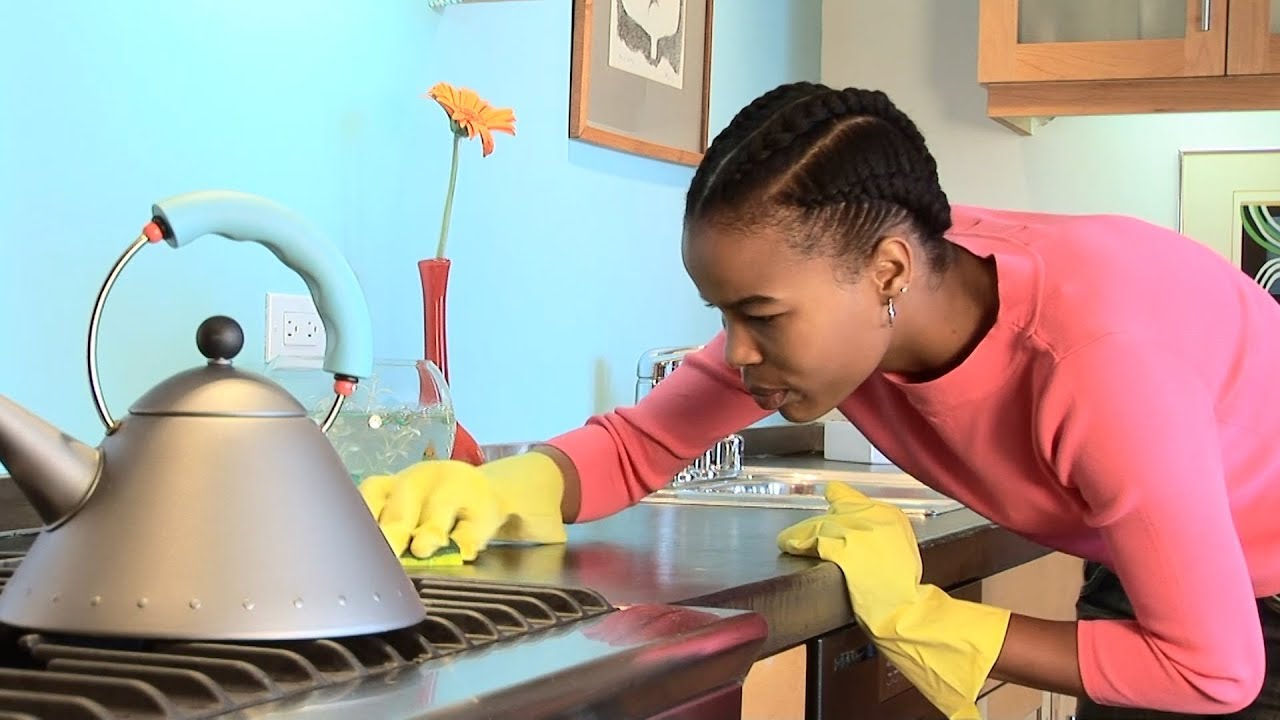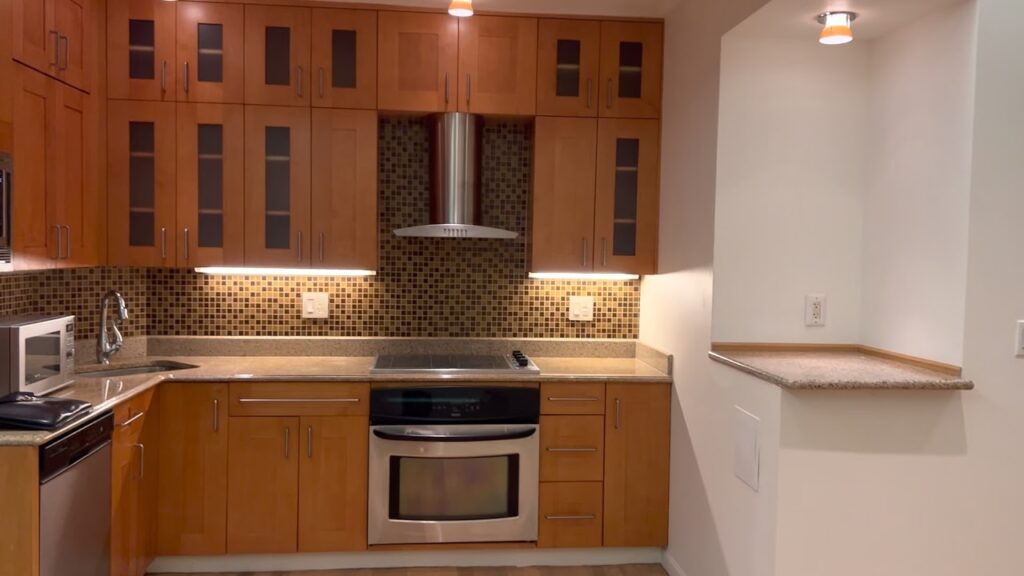For the ultimate open plan effect, a small kitchen can benefit from a broken plan layout. This layout consists of half and full partitions to separate the kitchen from the living and dining areas, while maintaining an open plan feel. To avoid having to create walls, look for alternatives such as freestanding furniture, slatted screens, and Crittall doors. Open shelving and other clever storage solutions can also be a good option.
Less is more
Small kitchens tend to be limited in space, but there are several ways to make the most of them. Using natural light to brighten the room is essential, especially if the kitchen is small and has low ceilings. Also, avoid using overhead lighting, which casts a lot of shadows and floods the room with bad lighting. For more natural light, try knocking down walls or installing windows.
Designers are constantly coming up with new ideas for small kitchens, but that doesn’t mean less storage. Today’s smaller kitchens can still have a lot of storage, thanks to more efficient design. Even a built-in pantry can double the amount of space you have and create a much more efficient workspace. Modern roll-trays and pull-trays have improved a lot in recent years, and you can find high-quality ones that will last for years.
To design a small kitchen that’s functional, start with the measurements. To make the most efficient use of space, create a scale plan of your kitchen on graph paper or other drawing material. Mark off doors and windows. You can even hang glasses below your cupboards, which will free up a lot of storage space in the cabinetry. By following these tips, you can create a functional and beautiful small kitchen that will be the envy of your friends.
Light and bright
The COVID-19 pandemic is just one reason why a light and bright kitchen design is a popular choice. It may also be a reflection of the moods of people who are redesigning their living spaces after a traumatic year. Colors are powerful, and light and bright kitchen design taps into the psychological foundations of color. Here’s how to incorporate these ideas into your kitchen design:
First, add lots of natural light. A kitchen needs lots of lighting, so use natural sources whenever possible. Ideally, natural light is your go-to choice when remodeling or designing a kitchen. Ensure that you keep windows clean and replace old ones with larger, more efficient ones. Lighting is also important in helping you do manual tasks and to set the right mood. Choose decorative fixtures to add a touch of class to your space.
The light and bright kitchen design is an ideal choice for anyone who loves coastal living. A bold aqua island and matching window shades can evoke a coastal look. Bright aqua and white cabinetry are balanced by plenty of natural light, warm wood floors, and additional white cabinetry. If you want to add a pop of color, try putting an artificial plant in your kitchen. By incorporating these simple ideas, you can have your dream kitchen in no time.
Reflective surfaces
A small kitchen can look larger by adding reflective surfaces. For example, glass-front cabinets and shiny countertops can create the illusion of a larger room. Stainless steel appliances can also reflect light, giving the room a brighter, more airy feel. A small kitchen can also appear larger with high-gloss floors, backsplashes, and cabinets. Regardless of the material chosen for your surfaces, think about the space you need to work with.
If possible, choose a small, minimalist design for your kitchen. Choosing reflective surfaces and minimalist design principles can maximize your space and make your kitchen feel more spacious. For instance, avoid large kitchen furniture that will take up valuable counter space. Similarly, choose movable fixtures and furnishings. These can save you tons of space. Here are some ideas for small kitchens. The most important thing to remember is that a small kitchen can look bigger with the right accessories.
Color your kitchen with a contrasting color. This will create the illusion of depth and open the room. The same principle applies to your cabinets and countertops. Choose a lighter shade on the lower part of the kitchen. You can also use a darker shade of cabinets in the upper part of the room. However, be careful about using darker colors, as they will make the room appear smaller. If you really want to give your small kitchen a more luxurious look, choose a darker color for the lower cabinets and lighter-coloured upper ones.
Open shelving
The best way to style open shelves in a small kitchen is by using a combination of modern and traditional styling. You can also use floating shelves in a contrasting color. These options will create an eclectic look and are less likely to collect dust. A final touch to open face shelves is to add sconces to the kitchen ceiling. These fixtures will light up dark corners while highlighting the open shelving styling. These are just some of the many options available for your small kitchen.
The height of the open shelving should vary to create interest. Having a row of dishes at the same height won’t add a lot of depth. You’ll want your eye to move over the collection to see all of its facets. When styling open shelves, remember to switch things up seasonally. For example, add some vases of flowers in spring or autumn and evergreen boughs during Christmas. Remember to use seasonal decor elsewhere in your home to coordinate with your open shelving.
You can also add some pattern to your open shelves. Colored glassware with patterns or patterned bowls for ice cream can make the shelves family-friendly. You can also mix and match styles for a fun look. Open shelving is a practical solution for small kitchens, so you don’t have to compromise style for functionality. Just make sure you have the space for it. The open shelving should be functional while still allowing enough space for everything you want to store.
Colorful schemes
For a fresh and uplifting effect, consider a color scheme that draws inspiration from Mother Nature. Consider warm white and natural wood tones as your base colors, and an accent color of olive green to continue the back-to-nature theme. These organic hues will add contrast and interest to a small kitchen. Read on for some ideas. We hope these ideas inspire you to experiment with new color schemes. Let us know how you use these shades in your small kitchen!
To create a serene look, consider using a monochromatic color scheme. This color scheme makes the eye move around the space without feeling constrained. Using one color throughout the space minimizes visual contrast, making the kitchen appear bigger. If you’re working with a limited budget, you may want to use a single color. To do this, choose paint colors that match the lightest, darkest, and mid-tone hues on a paint swatch. Make sure to coordinate the material with the color of the island countertop to avoid an overwhelming look.
Light blue is one color you might not think of when you think of small kitchens. However, the hue has been known to open up tiny spaces. A light blue kitchen can look more spacious when paired with black and white. This color scheme can also add a bijou feel to a small kitchen. If you are afraid of dark colors, opt for pastels. Try a light blue ceiling in your kitchen to open it up.
Storage solutions
Although a small kitchen isn’t the most pleasant space in the house to cook in, it can still be useful and functional with the right storage solutions. Small kitchens don’t have to be an eyesore, though; you can find ways to make it feel larger and more organized with some clever storage solutions. Read on for some ideas. Here are three tips for creating a small kitchen that feels spacious and organized.
Reuse containers. Reusable containers can be an easy way to reduce your garbage bin’s bulk. Not only do you save space, but they’re also more eco-friendly. Some supermarkets now allow customers to fill their own containers. And, if you’re a foodie, you can choose glass containers that are visible and easily see the amount of product inside them. This solution is especially useful for smaller kitchens.
Add extra workspace. Fold-out work surfaces are handy for writing recipes or taking a break from cooking. A folding stool can also serve as a workspace. You can even use kegs for stools. These can double as storage areas for linens and stuff. In addition to adding storage space, you can also incorporate more creative storage solutions for small kitchens. The key is organization. Be creative when deciding which storage options will work best in your space.

